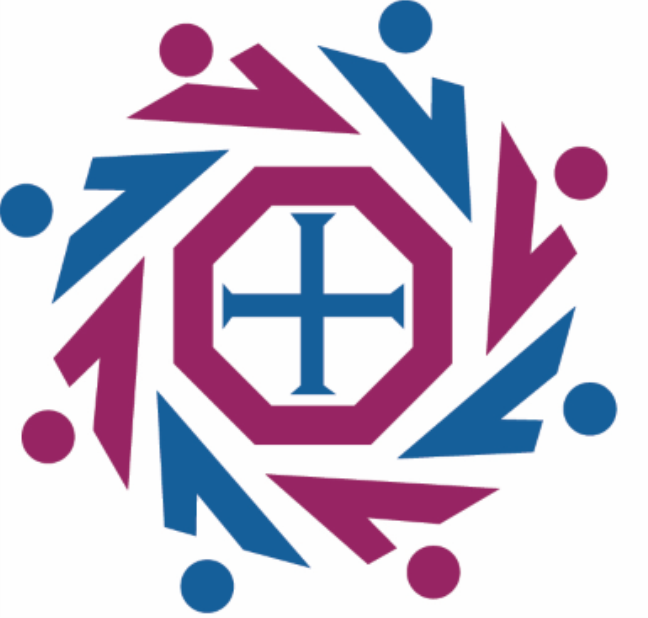Follow Us
Join our newsletter
Get the latest news delivered to your inbox.
We will get back to you as soon as possible
Please try again later
What is Lent?
Lent is a 40 day season of prayer, fasting, and almsgiving that begins on Ash Wednesday and ends at sundown on Holy Thursday. It's a period of preparation to celebrate the Lord's Resurrection at Easter. During Lent, we seek the Lord in prayer by reading Sacred Scripture; we serve by giving alms; and we practice self-control through fasting. We are called not only to abstain from luxuries during Lent, but to a true inner conversion of heart as we seek to follow Christ's will more faithfully. We recall the waters of baptism in which we were also baptized into Christ's death, died to sin and evil, and began new life in Christ.
Many know of the tradition of abstaining from meat on Fridays during Lent, but we are also called to practice self-discipline and fast in other ways throughout the season. Contemplate the meaning and origins of the Lenten fasting tradition in this reflection. In addition, the giving of alms is one way to share God's gifts—not only through the distribution of money, but through the sharing of our time and talents. As St. John Chrysostom reminds us: "Not to enable the poor to share in our goods is to steal from them and deprive them of life. The goods we possess are not ours, but theirs." (Catechism of the Catholic Church, no. 2446).
In Lent, the baptized are called to renew their baptismal commitment as others prepare to be baptized through the Rite of Christian Initiation of Adults, a period of learning and discernment for individuals who have declared their desire to become Catholics.
When did Lent start?
The observance of Lent as a 40-day time period began after the Council of Nicea in 325 A.D. but periods of fasting before Easter date back even earlier.
Who celebrates Lent?
Lent has traditionally been associated with the Catholic Church, but some Protestants, Orthodox Christians, and others also observe some form of Lent.
What is the purpose of Lent? What does it represent?
Lent begins with a visible, outward sign of ashes but aims toward inner conversion, helping us repent, avoid distractions, and focus on living the Gospel.
What should I give up for Lent?
Focus on sacrificing something meaningful that will help you draw closer to God. Better yet, focus on what you can take on: What small acts can you take on to manifest the love that God calls us to share?
Why don’t Catholics eat meat on Fridays during Lent?
Abstaining from meat on Fridays during Lent is a sacrifice and a small act of self-discipline that dates back to the early Church. Fish Frys are popular on Fridays during Lent.
Ash Wednesday and Good Friday feature additional rules for fasting and abstinence. This is in stark contrast to the abundant feasts of Easter.
What is the color of Lent?
- Violet (purple) is the color of Lent. On Laetare Sunday, priests will wear rose (pink) as a small break from the solemn purple and a reminder that Easter is drawing near. During Palm Sunday and Good Friday, priests wear red vestments.
When does Lent begin in 2025?
Lent begins with Ash Wednesday on Wednesday, March 5, 2025.
Why is Lent 40 days long?
Lent lasts for 40 days because Christ suffered in the desert for 40 days.
How is the date of Ash Wednesday determined?
Ash Wednesday always falls six and half weeks before Easter.
When is Fat Tuesday?
Fat Tuesday is the final day before Lent. In 2025, it takes place on March 4. Fat Tuesday is known as Shrove Tuesday or Pancake Day in other parts of the world.
How is the date of Easter determined?
Easter is a moveable feast as opposed to a fixed date each year. Easter being celebrated on the Sunday following the first full moon of spring (March 21 or later) dates back to the Council of Nicea in 325.
How long is Lent?
Lent lasts 40 days from Ash Wednesday to Holy Thursday, excluding Sundays. Sundays are an important part of Lent, but we do not include them in the “40 days” because on every Sunday we remember and celebrate the Resurrection of Christ in the Mass.
Do Sundays count in Lent?
Technically, the Church does not obligate us to fast on Sundays. However, the Sundays during Lent are still part of the Lenten season. Choosing to continue your Lenten sacrifice on Sunday is a personal choice.
When is Palm Sunday?
Palm Sunday, the last Sunday during Lent, takes place on March 24 in 2024. It signifies Jesus’s triumphant return to Jerusalem after spending 40 days and nights in the desert. At Mass, we celebrate his return and our desire to follow him.
When does Lent end?
Lent ends with the start of the Mass of the Lord’s Supper on Holy Thursday. This year, Lent ends on April 17, 2025.
When is Good Friday?
Good Friday takes place between Palm Sunday and Easter, as part of the Easter Triduum. It will occur on April 18, 2025, one day after Holy Thursday (or Maundy Thursday in some traditions.)
When is Easter in 2025?
Easter falls on Sunday, April 20, 2025.
Resources from the United States Catholic Conference of Bishops (usccb.org)
Lent: The Biblical Roots
Where does Lent come from? Lent draws its inspiration from the 40 days Jesus spent in the desert.
The Gospels tell us that after his baptism, Jesus fasted in the desert and then was tempted by the devil. He resisted these temptations and then went to Galilee to begin his public ministry.
Then the devil took him up to a very high mountain, and showed him all the kingdoms of the world in their magnificence, and he said to him, “All these I shall give to you, if you will prostrate yourself and worship me.” At this, Jesus said to him, “Get away, Satan! It is written: ‘The Lord, your God, shall you worship and him alone shall you serve.’” Then the devil left him and, behold, angels came and ministered to him.
Matthew 4: 8-11
What to Give Up for Lent
As Ash Wednesday draws near, many Catholics often find themselves wondering what they ought to “give up” for Lent.
Lenten sacrifices can be valuable if they help increase our reliance on Jesus and if the void we create by giving something up opens up space in our hearts for God to fill.
As much as we consider something to abstain from during Lent, we ought to consider what we can commit to as well. What outside actions can we take to better ignite the flame of our faith within us?
Prayer, Fasting and Almsgiving: The Three Pillars
Three key pillars characterize the Lenten season: prayer, fasting, and almsgiving (charity).
The USCCB tells us that during Lent, “we seek the Lord in prayer by reading Sacred Scripture; we serve by giving alms; and we practice self-control through fasting.”
While most Catholics are familiar with “no meat on Fridays” during Lent, fasting and abstinence are important components throughout Lent. This may look like giving up things like gossip, your favorite coffee order, or forgoing music in the car and replacing it with prayer.
Almsgiving reminds us of Jesus’s call to serve and connects us in solidarity with our brothers and sisters in need.
And lastly: prayer.
Lent: Liturgical Changes
Purple (or violet) is the color of the Lenten season and this is reflected in the vestments (chasuble) that a priest wears for most of Lent, starting on Ash Wednesday.
The “Gloria in Excelsis,” normally sung in a celebratory manner, is omitted, as is the “Alleluia” normally sung before the Gospel. “Praise to you, Lord Jesus Christ, King of Endless Glory” often serves as the replacement.
These are subtle reminders to us that we are in the desert with Jesus, inviting God to work in us during this time of sacrifice.
Preparing for Holy Week and Easter
Lent includes Palm Sunday, which presents its own unique liturgy, featuring a procession of the congregation into the church along with, of course, the distribution of palms. It is during this service that the entire Passion story is read aloud as we begin Holy Week.
Lent technically ends on Holy Thursday as we celebrate the Mass of the Lord’s Supper, remembering Jesus’s final meal with his disciples in which he institutes the Eucharist. Following this Mass, the altar and worship space are stripped bare, and the Blessed Sacrament is processed out from the altar to a chapel.
The next day is Good Friday, the only day of the year when Mass is not celebrated (though communion is distributed at some services). Holy Saturday, the day of waiting for the joy of the Resurrection, completes what is known as the Triduum: the three days leading up to Easter Sunday.




